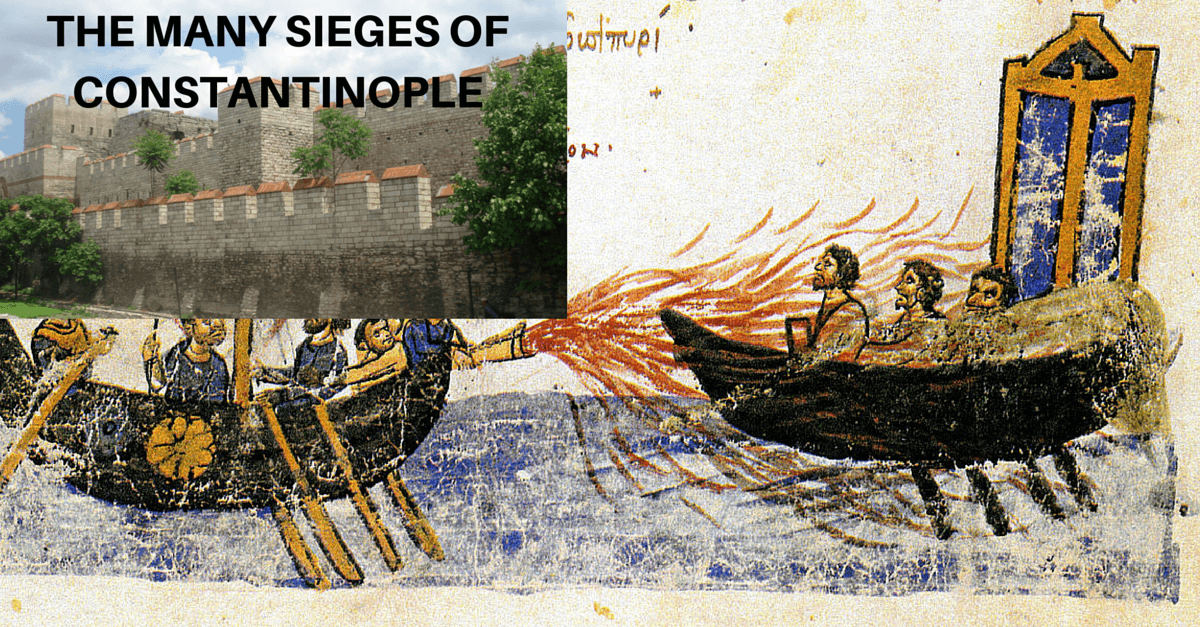Constantinople was the jewel of the Byzantine Empire, the continuation of the fallen Western Roman Empire. The city grew quickly and gained walls worthy of a powerful and wealthy empire. Threats continued to loom from all sides despite the military might of the Byzantines and the city faced several siege attempts throughout its long history. The great walls of the city were absolutely vital in the many successful defenses but so were the elite warriors and technology of the Byzantines. Here are some of the trials the city faced up until the emergence of gunpowder and the Ottoman Empire. for an overview of the amazing walls of the city click here.
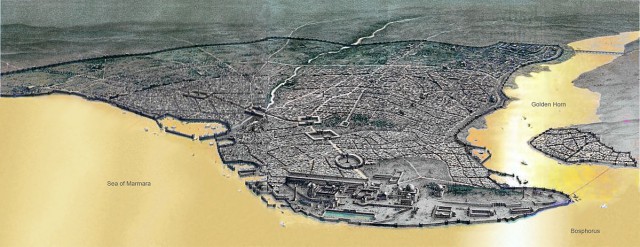
The capital of the empire enjoyed sustained growth and safety for near 300 years after Constantine founded the city in 324 CE. Though the city was not under direct threat, incompetent leadership under the usurping emperor Phocas ruling from 602 resulted in much of the empire’s territories falling to the Persians, Avars and Slavs. When Heraclius came to power after overthrowing Phocas, he immediately took personal charge of the Persian threat and left Constantinople to campaign and push the Persians out of Asia Minor. This campaign was successful but left Constantinople dangerously exposed and in 626 a group of Avars besieged the city with the help of northern Slavs and Sassanid Persians.
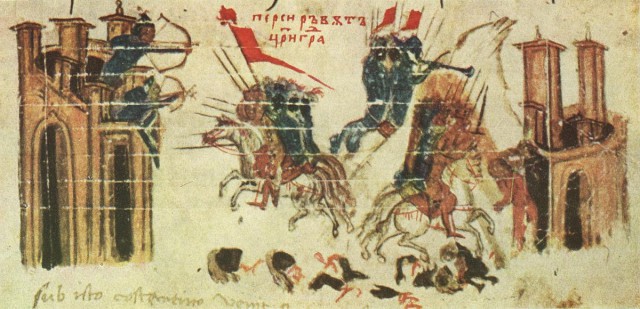
The siege was a cooperative effort primarily led by the Persians in an effort to reduce the effectiveness of Heraclius’s campaigns. The total force of the besiegers numbered around 80,000. The city itself had a modestly sized garrison of 10-15,000 however the civilian population did number as high as half a million during this time and were highly motivated to defend the city in the face of the pagan threat. The siege lasted near a month and was disastrous for the attackers; every assault failed to take the walls and both the fleets of the Persians and the Avars were destroyed. The Avars fled and the Persians were forced to make peace and return all previous Roman holdings.
Despite all of Heraclius’s efforts and successes in the east, it was all soon undone by the emerging Arab power. Within a span of less than fifty years the territories reconquered by Heraclius were taken by the Arabs. The Umayyad Caliphate employed a slow and strategic plan for taking the city. They slowly conquered areas around the city and various island and coastal fortresses which they converted into permanent Arab bases. Constantinople was completely cut off from the rest of its empire by 674 and the Arabs launched a series of springtime attacks every year for four years against the city with no success. The Byzantines were beginning to develop a new weapon known as Greek fire at the time and after four years of assaults they were finally able to effectively use the weapon to decimate the Arab fleet in the Sea of Marmara.
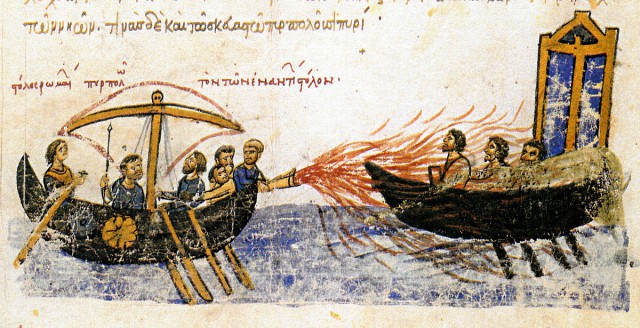
A base liquid similar to modern napalm allowed the fire to be pumped through siphons in liquid form. The liquid burned at extremely high temperature and could not be extinguished by water and floated on the surface. The substance was also said to spark and smoke which implies that a type of phosphorus was involved which made the mixture spark and spread more violently. The fire was ideally suited for the destruction of medieval vessels and the destruction of the fleet combined with some success in land battles to force the Caliphate to withdraw.
So much effort and money was put into the siege by the Arabs that the defeat almost caused their collapse and the Byzantines were easily able to reclaim much of their old territory. The Arabs would later launch a very similar siege in 717 with more ships and better supplies however the City was never at risk for actual assault and the Byzantine navy was again able to easily destroy the Arab navy, leaving the besieging Arabs to starve until they abandoned the siege. The Arabs would never again attempt to take the city and their defeat marked a pivotal point in religious history as it protected Eastern Europe from the Muslim advances.
In the 9th and 10th centuries a new threat harassed the capital. Foreign wars were fought almost constantly against the Muslims in the East and barbarian kingdoms in Greece and Southern Italy and the Bulgarian wars required near constant resources however the Byzantines overlooked a collection of cultures known as the Rus’ who were located north and west of the Black Sea near modern Kiev. In 860 a group of 200 ships raided down the coast of the Black Sea and into the straights of the Bosporus and began to raid and pillage all the Byzantine suburbs of Constantinople outside of the main defenses.
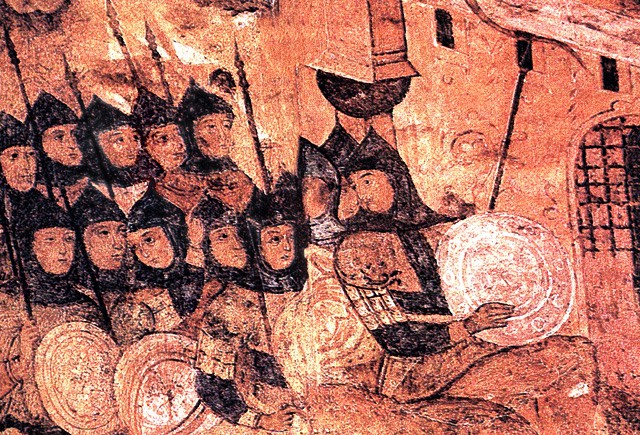
The Emperor Michael was occupied fighting against the Arabs and the city had no troops available to repel the attackers. The Rus’ raided at will for months until they were forced to retreat by returning armies. The Rus’ would return near eighty years later and attempt to raid again however they were thwarted by a small fleet of Byzantine ships which utilized Greek fire to decimate the large Rus’ fleet. These engagements were characterized by extreme brutality on both sides; the pillaging Rus’ reportedly killed civilians by crucifixion and drowning and the captured Rus’ were said to have been beheaded. The Byzantines would often bribe Rus’ raiders in the future to avoid the unpleasantness of their presence.
The first sack of the city was a terrible and unfortunate occurrence. The layers of confusing politics which led the Fourth Crusade to Constantinople rather than Egypt resulted in an army of 20,000 crusaders camped outside of the city. The Byzantine Empire saw a collection of incompetent rulers through the late 12th century from immature emperors to poor military leaders, the Empire steadily declined and was subjected to multiple rebellions and usurpations. The Byzantines were threatened by the growing power of the Seljuks in the east and attempted to use Crusading forces to reclaim their territories.
Relations between the Byzantines and Western Europe had already been strained by the Great Schism but the Byzantine disposition and treatment of Crusaders passing through their lands led to more mutual resentment. By the time the fourth Crusade was organized, Constantinople was under the rule of the usurper Alexius III Angelus who deposed Isaac II and Isaac’s son Alexius IV Angelus. Alexius IV was able to approach the leaders of the crusade, who were dangerously short on funds, and promise to pay them a fine reward and give them transport and troops to continue to Egypt if they would help depose Alexius III and reinstate him.
The Crusaders marched to Constantinople and besieged the city in 1203. The political dissention and the foreign wars at the time left the city with a modest force of 10-15,000 men and twenty ships while the crusaders had 20,000 soldiers and over 200 newly constructed Venetian ships. The siege was characterized by great timidity by the defenders. The tower of Galata, which held the vitally important chain which closed the Golden Horn, surrendered after limited initial fighting. The much larger Venetian fleet was able to approach the weaker sea walls along the Horn and attacks were launched from the ships. The attackers were violently repulsed by the skilled Varangian guardsmen and though there were opportunities to counterattack the crusaders, the Emperor Alexius III fled the city instead. The following day the citizens proclaimed Isaac and Alexius IV co-emperors and the siege was lifted.
Though Alexius IV had achieved what he wanted, he found it difficult to uphold his promise to pay the crusaders. Alexius III had taken a sizeable portion of the royal treasury when he fled and the years of decline had also depleted the treasury. Alexius IV took to requisitioning as many sculptures as he could and melting them down to pay the crusaders. The frantic efforts of Alexius IV to attain all the money he could did not endear him to the public and before long he was deposed by Alexius V. Alexius had not made the agreement with the crusaders and made it known that he would not be paying them. The crusaders had pledged support to Alexius IV, whom they believed to be the rightful emperor. When Alexius IV was murdered the crusaders were faced with a leader who had killed a man they supported and they were also left with absolutely no money. The crusaders faced utter ruin if they did not act and so by March of 1204 they again besieged Constantinople.
The assault of the city was greatly aided by the assaults of the previous year. The crusaders had established camps all around the city and were well supplied after settling in for the better part of a year. The crusaders already had access to the Golden Horn and the damage to the walls had not been repaired during the unstable year. The citizens who had so often aided in the defense of the city were exhausted from the turmoil and divided in their loyalties. The crusaders were able to attack the sea walls near Blachernae and gained access to the neighborhood. From Blachernae the crusaders were able to gain access for the rest of their army and raid southeast to the main city. Several fires tore through the city as a result of the sieges and ultimately left 35,000 people homeless.
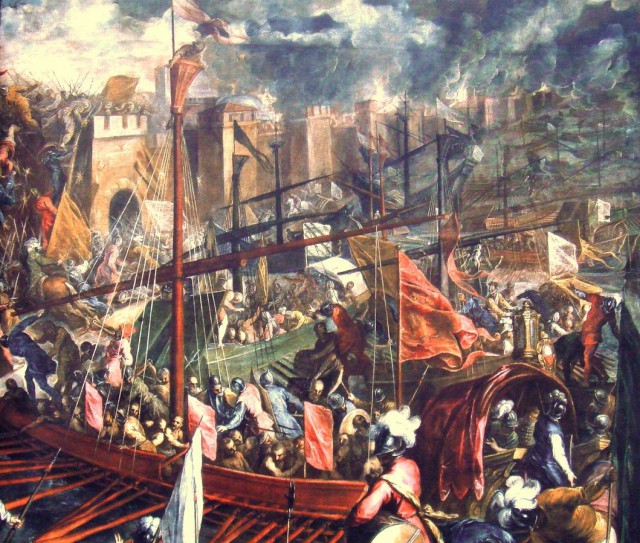
Emperor Alexius V fled the city after the crusaders took Blachernae and the crusaders pillaged the city for days. They reportedly raped and killed thousands of people and looted everything from homes to churches. Many priceless works of art were melted down and distributed however the Venetians kept many items intact and relocated them to Venice. With the looting of the city, the crusaders were able to fully recover from their financial problems. The Latins set up an empire of their own in the city which would last for almost sixty years. The crusaders were able to take advantage of the decline of the empire and were able to take the city while its army was occupied and its defenses were weakened. With the enemy already at the walls when war was declared, the defenders had little hope for success.
The Latin Empire was able to repel attempts by the Byzantines to retake the city however the Byzantines still maintained their cohesion and power in Asia Minor. Two major sieges were attempted by the Byzantines against Constantinople but both failed. With persistence they were eventually able to infiltrate the city while the Latin armies were on campaign in 1261. The Latin Empire had grown weak at that point and the citizens of the city were quick to welcome back the Byzantines after being poorly ruled by the Latin Emperors. Once the city was taken back the Latins had no hope of recapturing it and their empire dissolved, leaving the Byzantine Empire and Constantinople whole once again, at least until the Ottomans got themselves some very large cannons.
By William McLaughlin for War HIstory ONline
